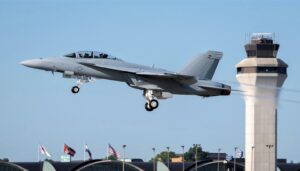
While DoD continues its development of Global Positioning System (GPS) M-code anti-jamming, anti-spoofing chips, cards, and receivers, the modernized GPS ground segment will not be ready for fielding until this December, at the earliest, and Assistant Secretary of the Air Force for Space Acquisition and Integration Frank Calvelli is telling Congress that the Department of the Air Force will reassess its estimated need for 27 Lockheed Martin [LMT] GPS satellites that broadcast the M-code signal--three more than fielded now. For…














